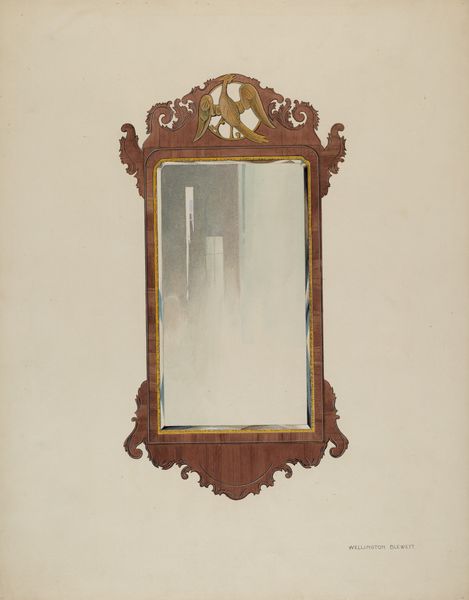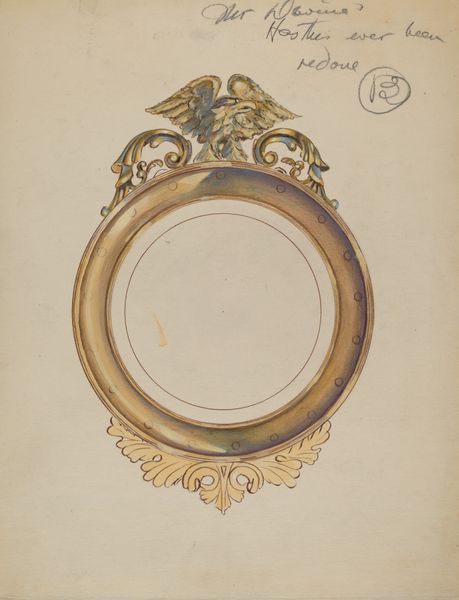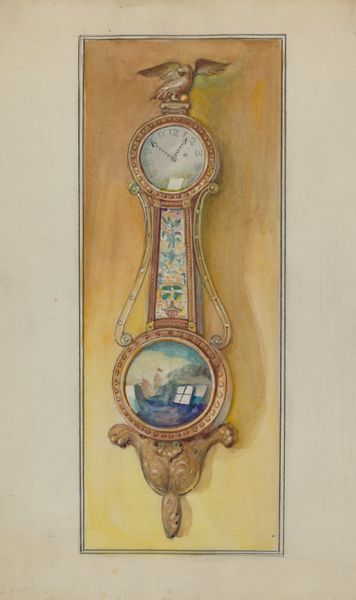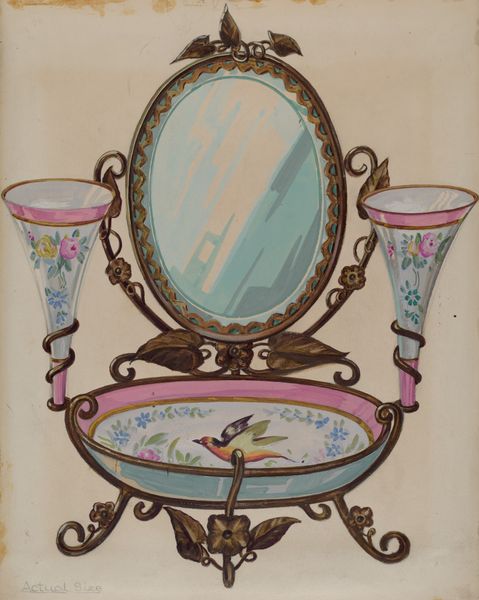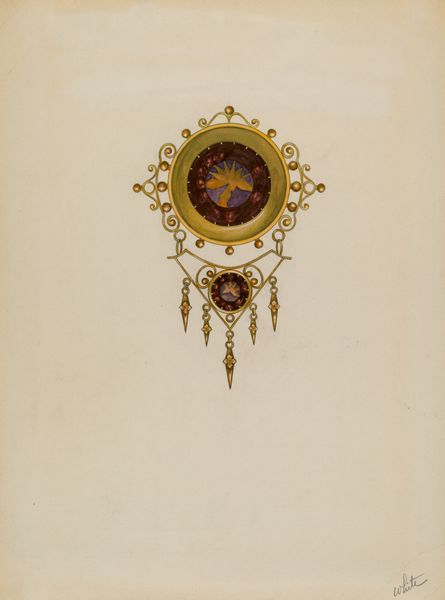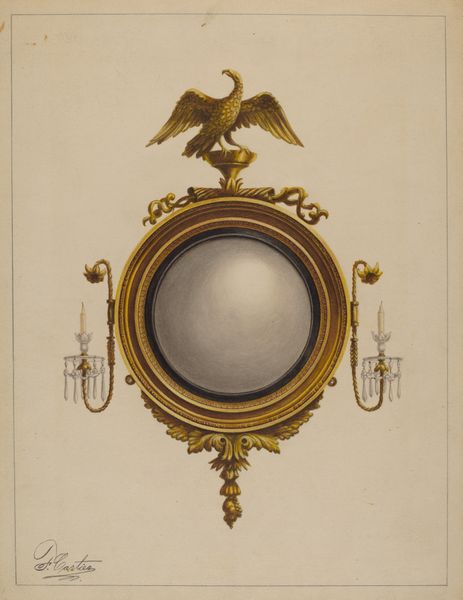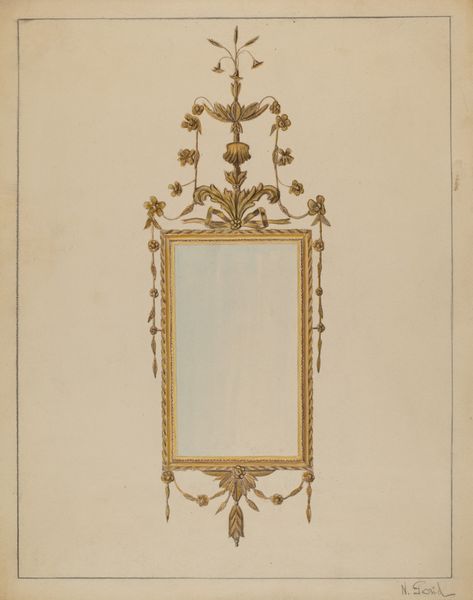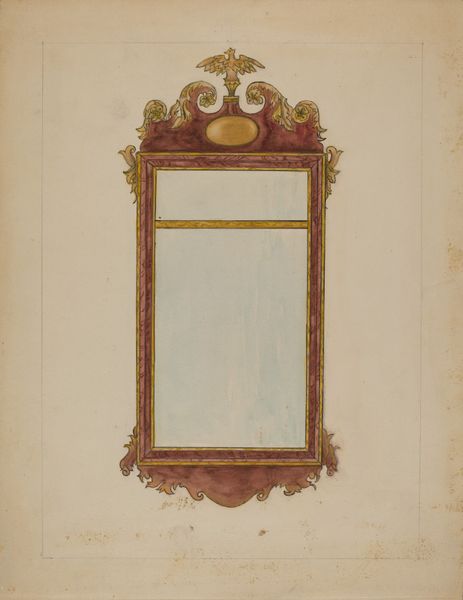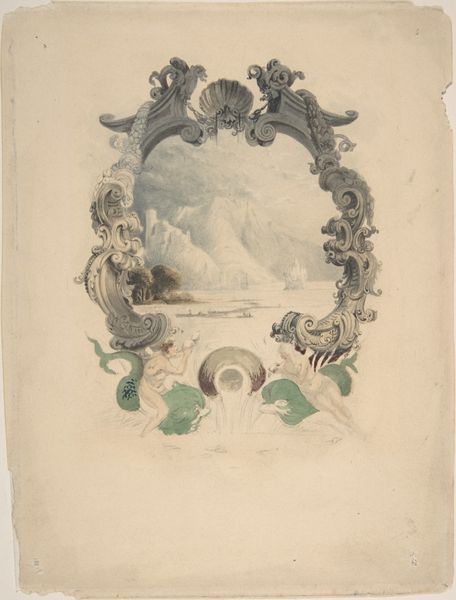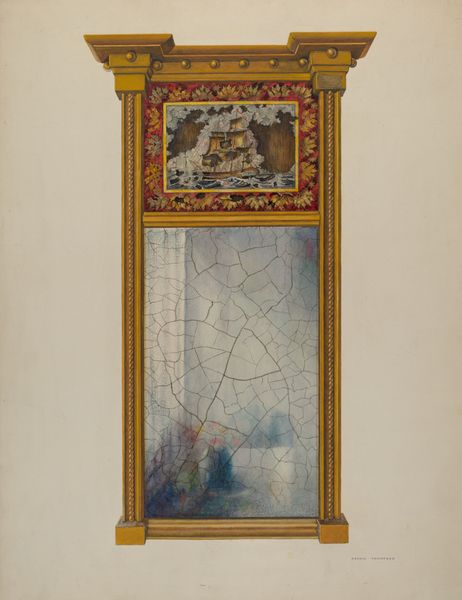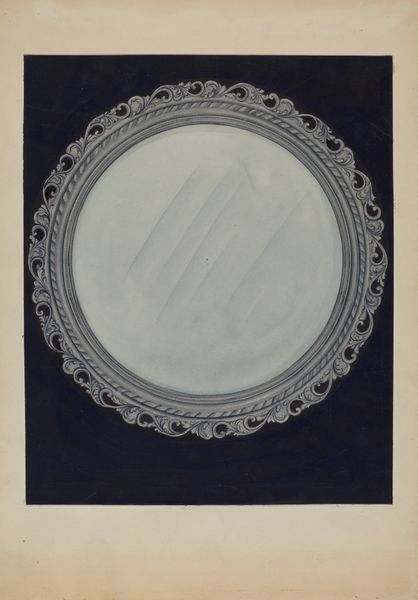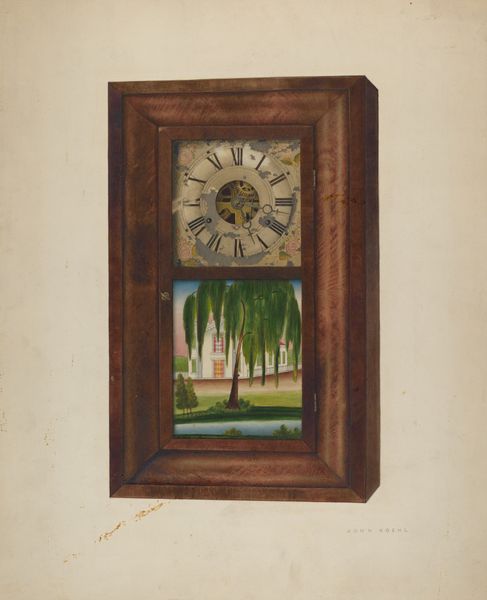
drawing, painting, watercolor
#
drawing
#
water colours
#
painting
#
oil painting
#
watercolor
Dimensions: overall (approximate): 30.5 x 23.2 cm (12 x 9 1/8 in.) Original IAD Object: 35" x 23 1/4"
Copyright: National Gallery of Art: CC0 1.0
Curator: This is George Loughridge’s "Looking-glass," created around 1936, likely with watercolors and possibly oil paint in some areas. It has a fascinating quality, don't you think? Editor: It's… curious. It evokes a strange nostalgia, almost like peering into a distorted memory. There's a tangible feeling of something faded or worn. The coloration, specifically that muted green, seems aged. Curator: Exactly! Consider how Loughridge has organized this pictorial space. The central motif, the looking glass itself, framed with baroque ornament and topped by a stylized eagle, provides an assertive focal point. Yet the reflected space, painted in these washes of pastel color, offers no specific content and undermines its intended clarity. Editor: Right, it’s not a crisp, revealing reflection. Instead, it emphasizes materiality. Is that faux gilding? I wonder about the kind of labor that went into producing mirrors with that sort of excessive decoration at the time. It speaks of class and taste, and Loughridge, through his own artistic labor, renders that problematic. Curator: You are certainly keyed into its context, and that relationship to social critique makes perfect sense. But what also strikes me is the semiotic tension between surface and depth. The mirror is supposed to offer a transparent passage into another reality, and here it delivers only the barest suggestion. It's almost a painting *of* a mirror, not *as* a mirror. Editor: And think about the economic context, the 1930s. These embellishments seem to hint at aspirational class markers, but also point to the precarity inherent in the labor practices required to manufacture them. Loughridge shows us that by emphasizing process; you can practically feel the layering of watercolor, see each individual brushstroke, mimicking and exposing the means of production. Curator: So, you're saying Loughridge uses these painterly strategies almost to create a kind of material echo chamber… intriguing. A breakdown, almost, of representation itself, or maybe even of American values? Editor: Perhaps. In focusing so intently on materiality, the piece invites us to reconsider the actual weight, literally and figuratively, of material culture in the interwar period. Curator: That focus definitely shifts my reading; it's less about the idealized reflection and more about the socio-economic underpinnings of such aspirational objects. A worthwhile adjustment to my thinking about the formal arrangement! Editor: It’s really an interesting play on image, labor and surface!
Comments
No comments
Be the first to comment and join the conversation on the ultimate creative platform.
